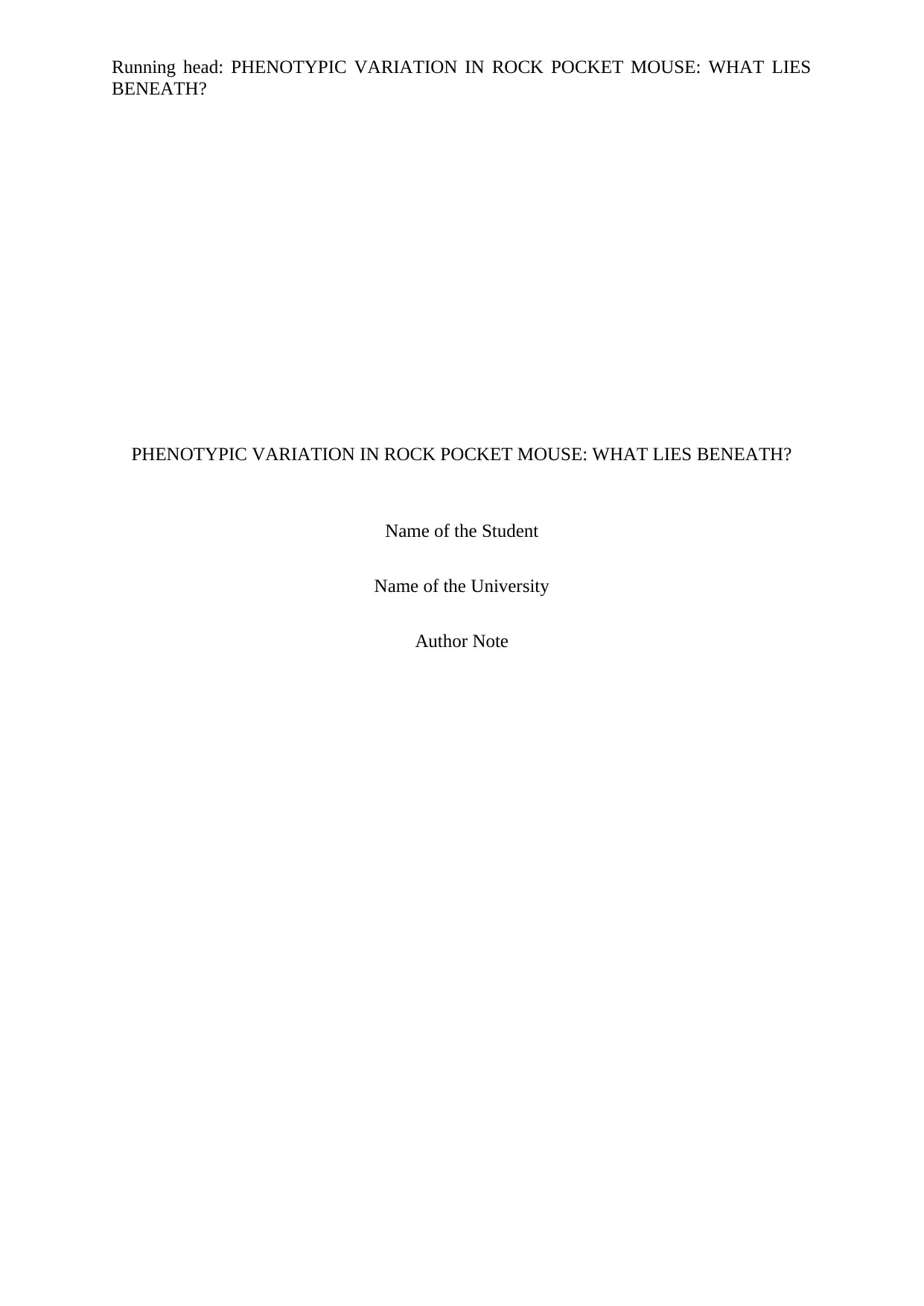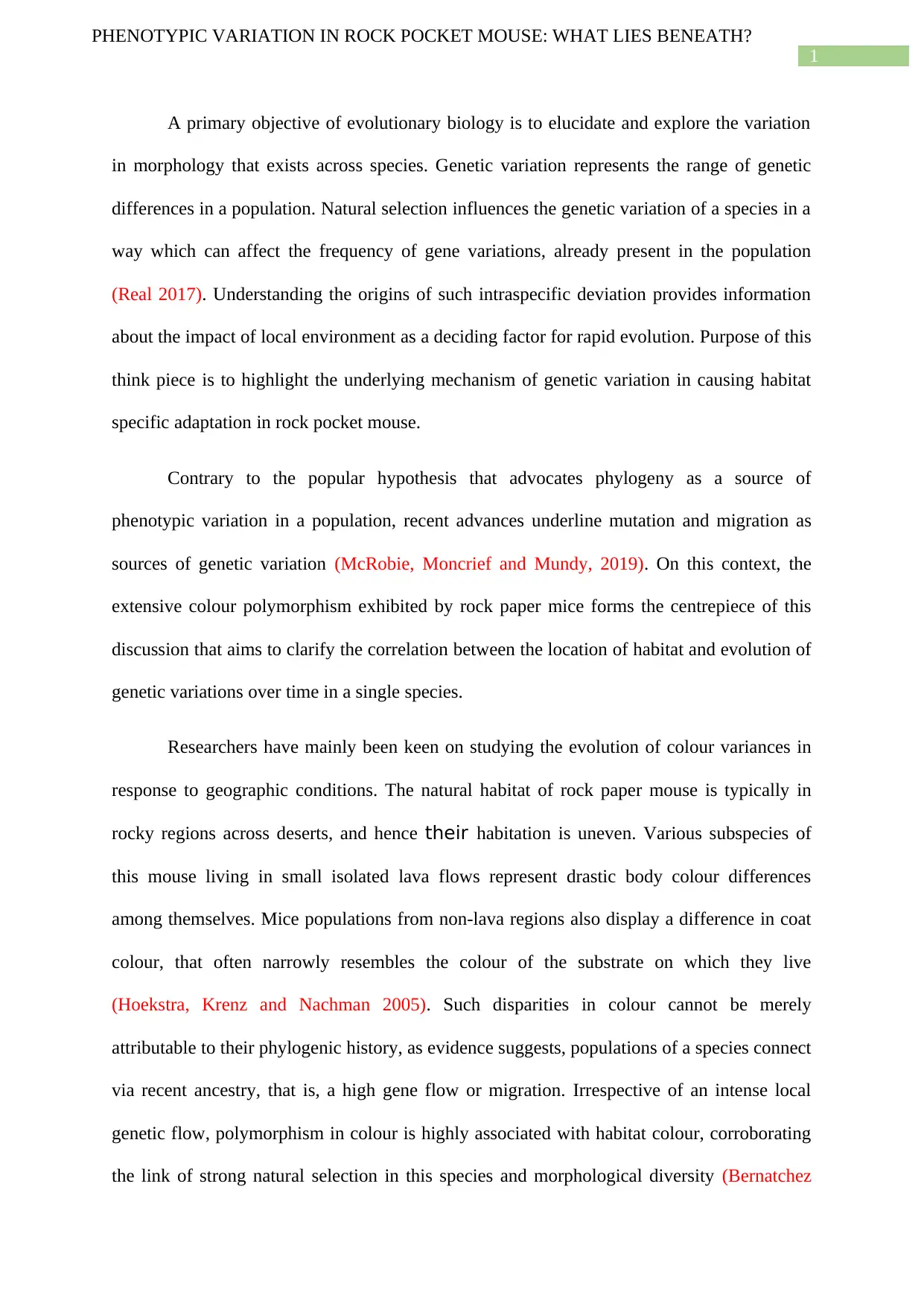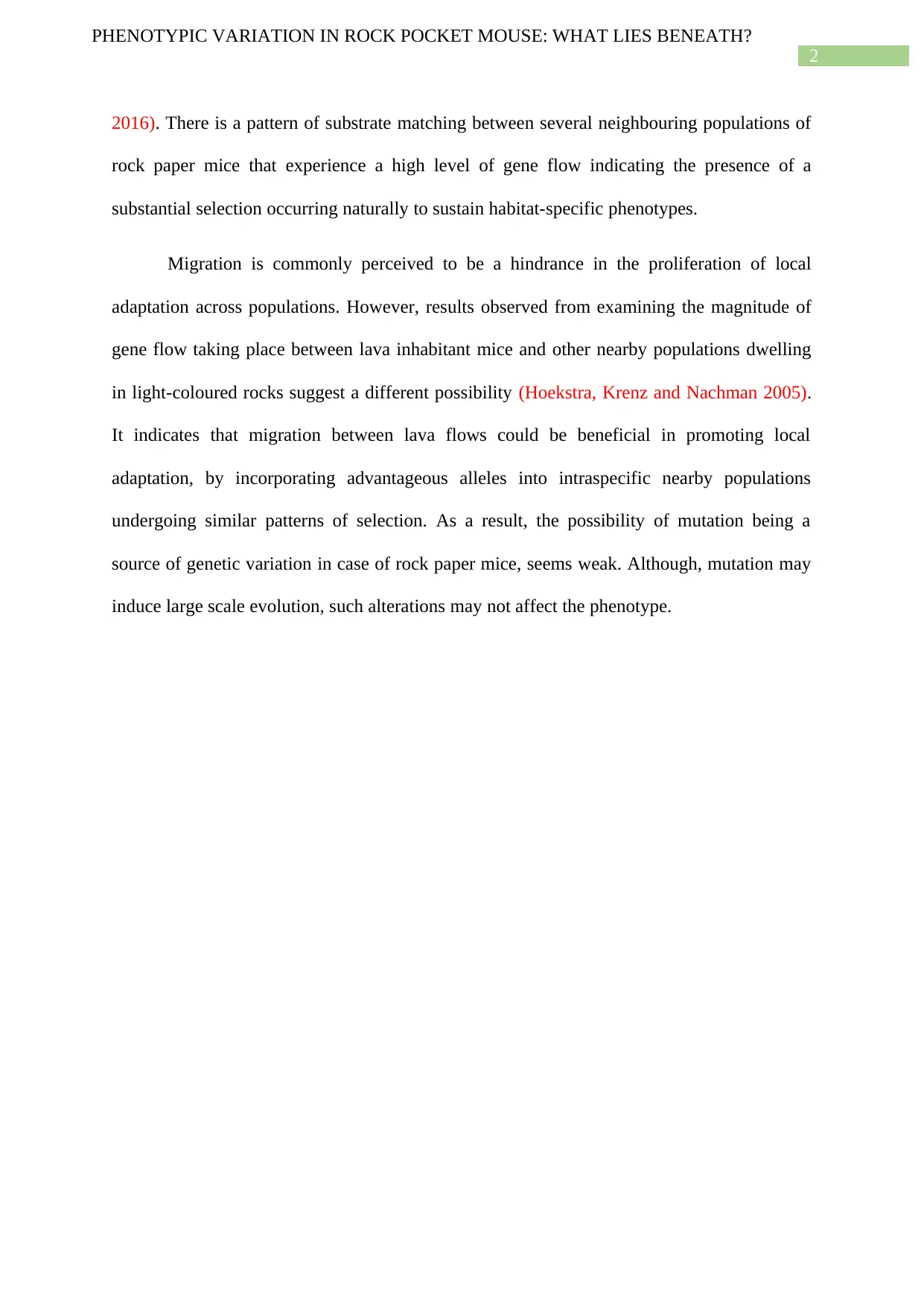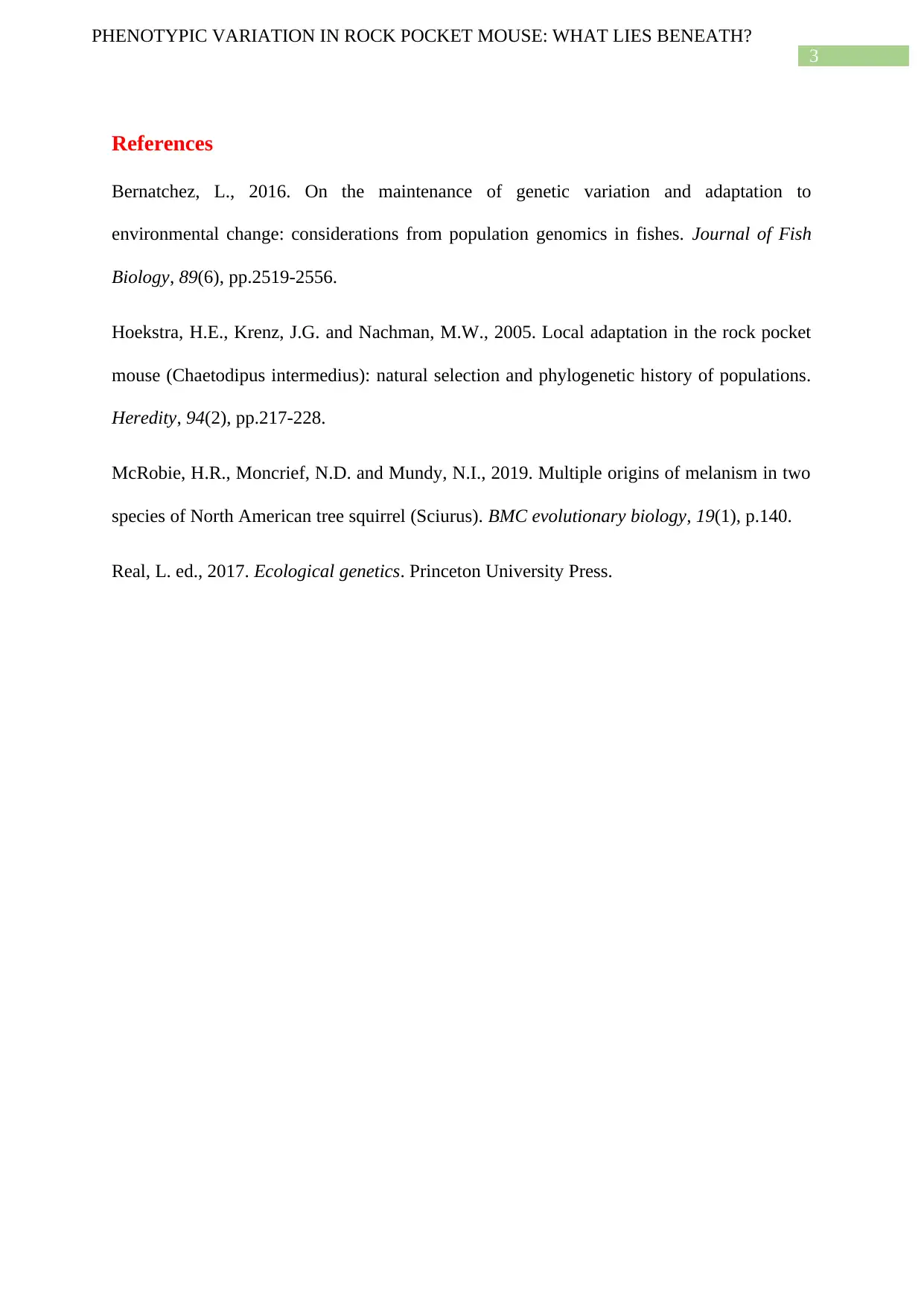Phenotypic Variation in Rock Pocket Mouse: What Lies Beneath? Biology
VerifiedAdded on 2022/08/20
|4
|705
|12
Essay
AI Summary
This essay delves into the phenotypic variation observed in rock pocket mice, focusing on the underlying genetic mechanisms that drive habitat-specific adaptation. The study emphasizes the role of natural selection in shaping the diverse coat colors of these mice, which allows them to blend in with their environment and avoid predation. The essay challenges the hypothesis that phylogeny is the primary source of phenotypic variation and instead highlights mutation and migration as key factors. It explores how the color polymorphism in rock pocket mice is closely tied to their habitat, demonstrating the correlation between environmental factors and the evolution of genetic variations within a single species. Furthermore, the essay discusses the potential benefits of migration in promoting local adaptation, even when gene flow is high, by introducing advantageous alleles. The essay concludes by addressing the role of mutation as a source of genetic variation in rock pocket mice. It suggests that, although mutations may induce large-scale evolution, such alterations may not always affect the phenotype.
1 out of 4






![[object Object]](/_next/static/media/star-bottom.7253800d.svg)